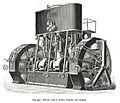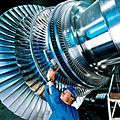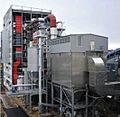Power station facts for kids
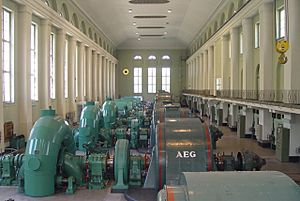
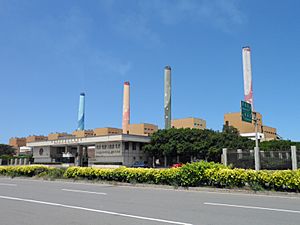
A power station (or power plant) is a place where electricity is produced. Many power stations contain one or more generators, a rotating machine that converts mechanical power into three-phase electric power. The relative motion between a magnetic field and a conductor creates an electric current.
In big power stations the spinning is usually driven by a steam turbine. The steam may come from:
- Burning fossil fuels
- Nuclear power, using radioactive sources
- Using the earth's heat, called geothermal energy
- Using the sun's heat
Some do not use steam engines to spin the generator. Rather they use:
- Hydropower, which uses the power of moving water to drive turbines
- Using the wind to drive wind turbines
- Internal combustion engine power
A few power stations use the sun's rays to generate solar power without motion. There are many power stations around the world, because many things need electricity to work.
Stations may be operated as Load following power plant, peaking power plant, or base load power plant.
Contents
Energy sources
Renewable energy resources
- Renewable heat energy
- Renewable flow energy
Non-renewable energy resources
These all use heat as a source of energy.
Solid-state electricity sources
These sources have no moving parts. They are more expensive than generators, and are used where other questions are more important.
Images for kids
-
The Athlone Power Station in Cape Town, South Africa
-
Hydroelectric power station at Glen Canyon Dam, Page, Arizona
-
St. Clair Power Plant, a large coal-fired generating station in Michigan, United States
-
Ikata Nuclear Power Plant, Japan
-
Nesjavellir Geothermal Power Station, Iceland
-
Cooling towers showing evaporating water at Ratcliffe-on-Soar Power Station, United Kingdom
-
"Camouflaged" natural draft wet cooling tower
-
Nellis Solar Power Plant in Nevada, United States
-
Wind turbines in Texas, United States
See also
 In Spanish: Central de generación eléctrica para niños
In Spanish: Central de generación eléctrica para niños




